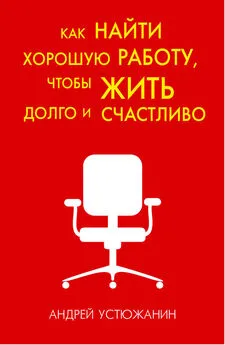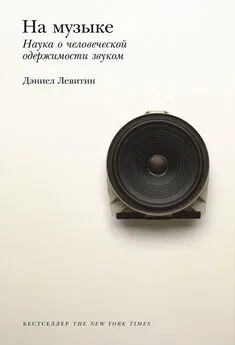Дэниел Левитин - Счастливое старение. Рекомендации нейробиолога о том, как жить долго и хорошо
- Название:Счастливое старение. Рекомендации нейробиолога о том, как жить долго и хорошо
- Автор:
- Жанр:
- Издательство:Манн, Иванов и Фербер
- Год:2021
- Город:Москва
- ISBN:9785001695868
- Рейтинг:
- Избранное:Добавить в избранное
-
Отзывы:
-
Ваша оценка:
Дэниел Левитин - Счастливое старение. Рекомендации нейробиолога о том, как жить долго и хорошо краткое содержание
Ответы на эти и многие другие вопросы вы найдете в книге известного нейробиолога и автора бестселлеров о природе возрастных изменений и о том, как можно прожить долго и что нужно делать сейчас (в любом возрасте), чтобы в 70, 80 и 90 жить полной жизнью.
Книга предназначена для широкого круга читателей.
На русском языке публикуется впервые.
Счастливое старение. Рекомендации нейробиолога о том, как жить долго и хорошо - читать онлайн бесплатно ознакомительный отрывок
Интервал:
Закладка:
932
A. M. Lozano et al., “Subcallosal Cingulate Gyrus Deep Brain Stimulation for Treatment-Resistant Depression,” Biological Psychiatry 64, no. 6 (2008): 461–467.
933
Y. Ezzyat et al., “Closed-Loop Stimulation of Temporal Cortex Rescues Functional Networks and Improves Memory,” Nature Communications 9, no. 1 (2018): 365.
934
Цит. по: B. Carey, “ ‘Pacemaker’ for the Brain Can Help Memory, Study Finds,” The New York Times, April 21, 2017, p. A19.
935
B. Carey, “A Brain Implant Improved Memory, Scientists Report,” The New York Times, February 7, 2018, p. A17.
936
E. Landau, “Artificial Hand Lets Amputee Feel Object,” CNN, February 6, 2014, https://www.cnn.com/2014/02/05/health/bionic-hand/index.html.
937
Цит. по: R. Godwin, “We Will Get Regular Body Upgrades: What Will Humans Look Like in 100 Years?” The Guardian, September 22, 2018.
938
C. E. Bouton et al., “Restoring Cortical Control of Functional Movement in a Human with Quadriplegia,” Nature 533, no. 7602 (2016): 247.
939
Я признателен Дэну Кауфману за эту идею.
940
Z. Istvan, “I Just Got a Computer Chip Implanted in My Hand – and the Rest of the World Won’t Be Far Behind,” Business Insider, September 25, 2015.
941
S. Jeffries, “Neil Harbisson: The World’s First Cyborg Artist,” The Guardian, May 6, 2014. Позвольте внести ясность: Харбиссон не может просматривать веб-страницы с помощью мозга или получать видеоизображения, которые отображались бы на чем-то вроде мысленного экрана. Люди с Bluetooth могут отправлять и принимать звуковые сигналы посредством встроенного в зуб импланта, который передает звук в головной мозг при помощи костной проводимости. M. Franco, “Antenna Implanted in Cyborg’s Skull Gets Wi-Fi, Color as Sound,” CNET, April 14, 2014, https://www.cnet.com/news/cyborg-interview-hear-colors-with-antenna-in-your-skull/.
942
A. Mandavilli, “A Patch Uses Sweat to Get a Read on Your Body’s Toil,” The New York Times, January 21, 2019, p. B3.
943
A. Stych, “Serena Williams Rocks Wearable Tech in Gatorade Ad,” The Business Journals, December 27, 2018.
944
J. A. Brewer et al., “Meditation Experience Is Associated with Differences in Default Mode Network Activity and Connectivity,” Proceedings of the National Academy of Sciences 108, no. 50 (2011): 20254–20259; K. A. Garrison et al., “Meditation Leads to Reduced Default Mode Network Activity beyond an Active Task,” Cognitive, Affective, and Behavioral Neuroscience 15, no. 3 (2015): 712–720.
945
J. D. Creswell et al., “Alterations in Resting-State Functional Connectivity Link Mindfulness Meditation with Reduced Interleukin-6: A Randomized Controlled Trial,” Biological Psychiatry 80, no. 1 (2016): 53–61.
946
J. H. Jang et al., “Increased Default Mode Network Connectivity Associated with Meditation,” Neuroscience Letters 487, no. 3 (2011): 358–362; S. W. Lazar et al., “Meditation Experience Is Associated with Increased Cortical Thickness,” Neuroreport 16, no. 17 (2005): 1893; R. E. Wells et al., “Meditation’s Impact on Default Mode Network and Hippocampus in Mild Cognitive Impairment: A Pilot Study,” Neuroscience Letters 556 (2013): 15–19; K. C. Fox et al., “Is Meditation Associated with Altered Brain Structure? A Systematic Review and Meta-Analysis of Morphometric Neuroimaging in Meditation Practitioners,” Neuroscience and Biobehavioral Reviews 43 (2014): 48–73.
947
F. Zeidan et al., “Mindfulness Meditation Improves Cognition: Evidence of Brief Mental Training,” Consciousness and Cognition 19, no. 2 (2010): 597–605.
948
M. A. Cohn and B. L. Fredrickson, “In Search of Durable Positive Psychology Interventions: Predictors and Consequences of Long-Term Positive Behavior Change,” Journal of Positive Psychology 5, no. 5 (2010): 355–366.
949
M. A. Rosenkranz et al., “Reduced Stress and Inflammatory Responsiveness in Experienced Meditators Compared to a Matched Healthy Control Group,” Psychoneuroendocrinology 68 (2016): 117–125.
950
E. Walsh, T. Eisenlohr-Moul, and R. Baer, “Brief Mindfulness Training Reduces Salivary IL-6 and TNF-α in Young Women with Depressive Symptomatology,” Journal of Consulting and Clinical Psychology 84, no. 10 (2016): 887.
951
P. Kaliman et al., “Rapid Changes in Histone Deacetylases and Inflammatory Gene Expression in Expert Meditators,” Psychoneuroendocrinology 40 (2014): 96–107.
952
J. A. Dusek et al., “Genomic CounterStress Changes Induced by the Relaxation Response,” PLoS One 3, no. 7 (2008): e2576; H. Lavretsky et al., “A Pilot Study of Yogic Meditation for Family Dementia Caregivers with Depressive Symptoms: Effects on Mental Health, Cognition, and Telomerase Activity,” International Journal of Geriatric Psychiatry 28, no. 1 (2013): 57–65; E. Luders et al., “The Unique Brain Anatomy of Meditation Practitioners: Alterations in Cortical Gyrification,” Frontiers in Human Neuroscience 6, (2012): 34.
953
J. D. Creswell et al., “Mindfulness-Based Stress Reduction Training Reduces Loneliness and ProInflammatory Gene Expression in Older Adults: A Small Randomized Controlled Trial,” Brain, Behavior, and Immunity 26, no. 7 (2012): 1095–1101.
954
N. S. Schutte and J. M. Malouff, “A MetaAnalytic Review of the Effects of Mindfulness Meditation on Telomerase Activity,” Psychoneuroendocrinology 42 (2014): 45–48; T. L. Jacobs et al., “Intensive Meditation Training, Immune Cell Telomerase Activity, and Psychological Mediators,” Psychoneuroendocrinology 36, no. 5 (2011): 664–681.
955
J. Russell-Williams et al., “Mindfulness and Meditation: Treating Cognitive Impairment and Reducing Stress in Dementia,” Reviews in the Neurosciences 29, no. 7 (2018): 791–804.
956
Цит. по: N. Narboe, ed., Aging: An Apprenticeship (Portland, OR: Red Notebook Press), p. 80.
957
D. Velleman, “Well-Being and Time,” Pacific Philosophical Quarterly 72, no. 1 (1991): 48–77.
958
M. Slote, Goods and Virtues (New York: Oxford University Press, 1983).
959
E. Diener, D. Wirtz, and S. Oishi, “End Effects of Rated Life Quality: The James Dean Effect,” Psychological Science 12, no. 2 (2001): 124–131.
960
См. также: J. Glasgow, “The Shape of a Life and the Value of Loss and Gain,” Philosophical Studies 162, no. 3 (2013): 665–682.
961
Nature Editorial Staff, “Study the Survivors,” Nature 568 (2019): 143; R. Garza, “Children’s Cancer Research to Expand, with Help from Local Oncologist, Survivor,” Rivard Report, June 11, 2018, https://therivardreport.com/childrens-cancer-research-to-expand-with-help-from-local-oncologist-survivor/.
962
H. S. Friedman and M. L. Kern, “Personality, Well-Being and Health,” Annual Reviews of Psychology 65 (2014): 719–742.
963
D. G. Blanchflower and A. J. Oswald, “Is Well-Being U-Shaped over the Life Cycle?” Social Science and Medicine 66, no. 8 (2008): 1733–1749.
964
Пинк кратко излагает аргументы, приведенные социологом Ханнесом Швандтом. D. H. Pink, When: The Scientific Secrets of Perfect Timing (New York: Penguin Press, 2019). ( Пинк Д. Таймхакинг. Как наука помогает нам делать все вовремя. М.: Альпина Паблишер, 2018.)
965
L. L. Carstensen and M. DeLiema, “The Positivity Effect: A Negativity Bias in Youth Fades with Age,” Current Opinion in Behavioral Sciences 19 (2018): 7–12.
966
M. Mather, “The Affective Neuroscience of Aging,” Annual Review of Psychology 67 (2016): 213–238; L. K. Sasse et al., “Selective Control of Attention Supports the Positivity Effect in Aging,” PloS One 9, no. 8 (2014): e104180.
967
Из личного общения с Сонни Роллинзом, июнь 2018 года.
968
См., например: Economist Intelligence Unit, “The Economist Intelligence Unit’s Quality-of-Life Index,” 2005, http://www.economist.com/media/pdf/QUALITY_OF_LIFE.pdf; European Union European Commission, “Quality of Life Indicators,” 2013, https://ec.europa.eu/eurostat/statistics-explained/index.php/Quality_of_life_indicators; P. Haslam, J. Schafer, and P. Beaudet, eds., Introduction to International Development: Approaches, Actors, and Issues, 2nd ed. (Don Mills: Oxford University Press, 2012); D. Kahneman and A. B. Krueger, “Developments in the Measurement of Subjective Well-Being,” Journal of Economic Perspectives 20, no. 1 (2006): 3–24; United Nations Development Program, Human Development Report, 2013, http://hdr.undp.org/en/statistics/hdi/. I thank my McGill honors students Lauren Guttman, Jane Stocks, and Noa Yaakoba-Zohar for bringing these issues and papers to my attention.
969
M. J. Hornsey et al., “How Much Is Enough in a Perfect World? Cultural Variation in Ideal Levels of Happiness, Pleasure, Freedom, Health, Self-Esteem, Longevity, and Intelligence,” Psychological Science 29, no. 9 (2018): 1393–1404. См. также: Y. Uchida and S. Kitayama, “Happiness and Unhappiness in East and West: Themes and Variations,” Emotion 9 (2009): 441–456.
970
A. Chiu, “Americans Are the Unhappiest They’ve Ever Been, U.N. Report Finds. An ‘Epidemic of Addictions’ Could Be to Blame,” The Washington Post, March 21, 2019.
971
Цит. по: Chiu, “Americans Are the Unhappiest.”
972
Цит. по: Chiu, “Americans Are the Unhappiest.”
973
J. M. Twenge and W. K. Campbell, “Associations between Screen Time and Lower Psychological Well-Being among Children and Adolescents: Evidence from a Population-Based Study,” Preventive Medicine Reports 12, no. 271 (2018).
974
Chiu, “Americans Are the Unhappiest.”
975
R. Waldinger, “What Makes a Good Life? Lessons from the Longest Study on Happiness,” TEDx Beacon Street, 2016, https://www.youtube.com/watch?v=8KkKuTCFvzI.
976
Waldinger, “What Makes a Good Life?”
977
C. Gregoire, “The 75-Year Study That Found the Secrets to a Fulfilling Life,” Huffington Post, August 11, 2013, http://www.huffingtonpost.com/2013/08/11/how-this-harvard-psycholo_n_3727229.html.
Читать дальшеИнтервал:
Закладка:








![Дэниел Левитин - Путеводитель по лжи [Критическое мышление в эпоху постправды]](/books/1101191/deniel-levitin-putevoditel-po-lzhi-kriticheskoe-my.webp)

